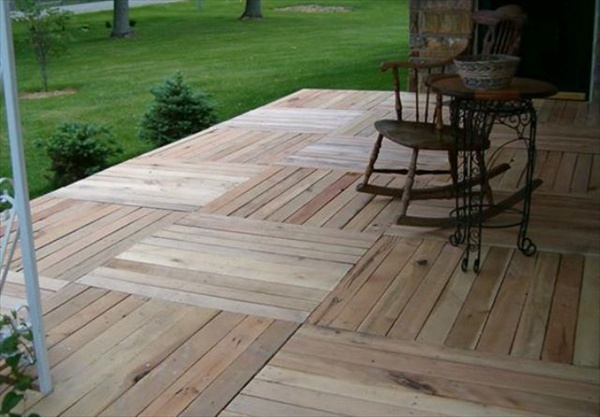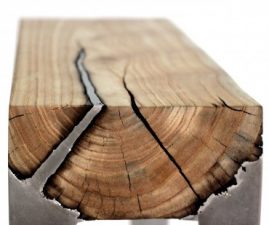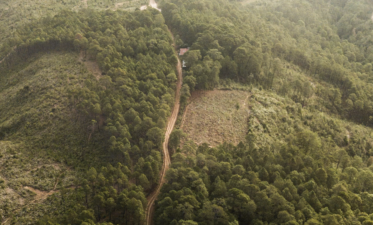Up to 30% of the wood sold in markets globally is harvested illegally, according to international agreements. This deforestation causes habitat loss and extinction (read about how your bank is burning the Amazon) and a new UN initiative wants to track the bad guys, or rather tell you about the source of your wood, through a new app.
The cost of wood has tripled in the last year offering new channels for illegal wood to be harvested and sold on the black market. China, Canada, Germany and the USA are the top exporters of wood, globally.
Jump here if you want to make your deck more sustainable
The Food and Agriculture Organization of the United Nations launched a new online portal providing information on forest-related laws around the world in order to help promote legal forest management, timber production and trade, and contribute to efforts to make forest resource use sustainable.
The first such portal of its kind: TimberLex provides information on legislation relating to forest management, timber production and trade from 46 timber consumer, processing and producer countries.
Illegal logging and related trade are estimated to account for up to 30% of the global timber trade – or up to $100 billion annually – and impairs poverty alleviation, food security and climate change mitigation while undermining efforts to manage forests sustainably.
In an effort to address this issue, major wood-consuming countries are increasingly imposing requirements for timber imports to document their legal status.
“One of the challenges to promoting legality and transparency in the timber trade is knowing what regulations are in place that may impact actions along the value chain, as each country’s legal system is of course, unique,” stated Daphne Hewitt, Manager of the UN’s European Union Forest Law Enforcement, Governance and Trade Programme.
“It can be very challenging for timber producers, exporters, importers and regulators in timber exporting and importing countries to find reliable information on national legal requirements around timber legality,” she added.
Legislation from major timber producing and consuming countries
“The unique selling point of the portal is the user-friendly nature which allows easy access to national legislation in three languages,” said Blaise Kuemlangan, Chief of the Development Law Service of the UN’s FAO Legal Office.
The TimberLex portal points users to specific measures and verbatim citations within legal texts and allows easy and direct comparison between legal frameworks. Country profiles catalogue legislation around four clusters encompassing the different stages of the timber value chain considered critical to the legality of timber: land tenure and forest management; timber harvesting activities; processing, transport and trade; and taxes and fees.
The portal aims to enable more effective law enforcement and contribute to improving forest governance, curbing illegal deforestation and associated forest degradation, and promoting global production and trade in legal timber.
The database is aimed at legislators, policymakers, forestry departments and law enforcement officers, private sector producers, processors and traders, civil society and non-government organizations.
Reading about this and watching my cousin build a new deck at his nature retreat Kingfisher Bay in Ontario, got us talking about the price of lumber, composite decks and dock renovations.
How to make your deck sustainable
Look for FSC Label

A deck made from pallets. Source: unknown. You can also just use pallets for the frame.
Order wood through a trusted source and look for the FSC label that the wood was harvested sustainably. FSC labels are used on products to identify that the product has been verified to come from an FSC-certified source. FSC labels can be found on millions of products around the world: from toilet roll to your favourite book, that milk carton in your fridge, and other food products. I have friends who were part of the founding initiatives of the FSC in Canada.
Read about its history here. Lumber can be treated with chemicals that are considered harmful to your health like arsenic and copper so not all “natural” wood is really good for you.
Consider using vintage wood if it’s hardwood. The video below shows how you can build a new deck with old wood.
Pallets can be used to make a deck
Consider composite wood. It can also be used for decks. But never used it on raised beds for gardens, as it contains plastics and chemicals that can leach into your food. Composite wood typically offers between 15 to 20 years life span, lasting way more than wood. Invented in the late 1980s, wood-plastic composite decking (also called “composite wood decking”) is made of wood fibers encased in plastic. Composite decking is readily available at big box home improvement stores like The Home Depot and Lowe’s, as well as local lumberyards throughout the US.
As more builders and homeowners learn of wood decking problems, many are turning to high-performance composite decking.
• Resistant to severe weather.
• Very minimal maintenance cost.
• Thanks to its plastic feature, it is highly mould resistant, irrespective of how exposed to moisture it is.
• It is lightweight and has a lock style, making boards easy to figure out for a successful DIY installation
5. If you go for “wood” find wood that is harvested local to you. If the wood you buy is forested in Canada, sent to China for treatment and then sold to you in Texas it is not sustainable wood. Find local, just like strawberries.
Avoid treated wood for your health and for the fish:
Chromium copper arsenate, or CCA, according to the Environmental Working Group, was once widely used as a preservative and insecticide in pressure-treated wood. In 2001, tests by the group and the Healthy Building Network showed that wood treated with CCA could expose people to dangerous levels of arsenic, spurring the Environmental Protection Agency to force its removal from the market.
Copper-based chemicals replaced the arsenic preservative, but some of them are also hazardous. For example, alkaline copper quaternary and copper azole are extremely toxic to aquatic life and should never be used in areas where runoff can be carried to surface waters, marshes or coastal areas. Borate-based wood preservatives are also common, but they can leach out of wet wood, leaving the wood vulnerable to decay.




